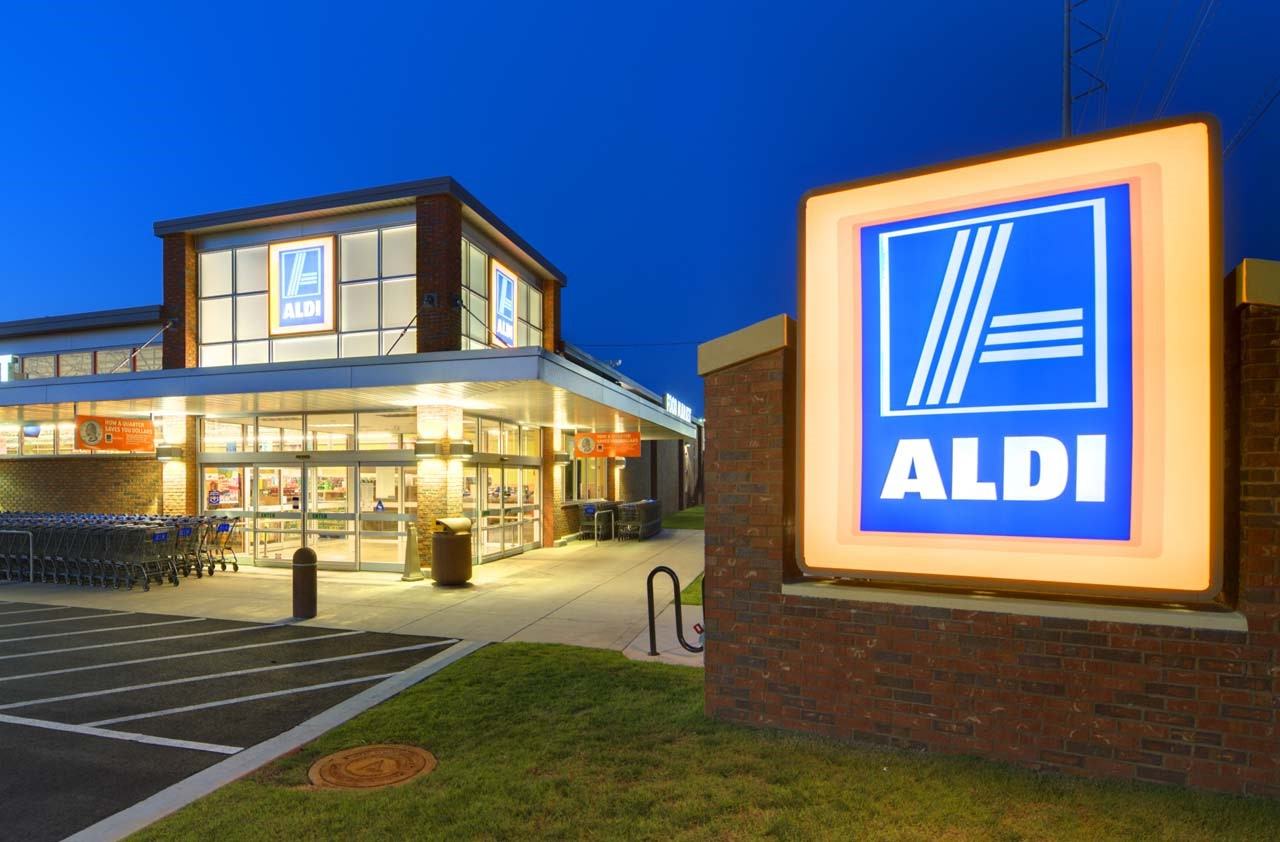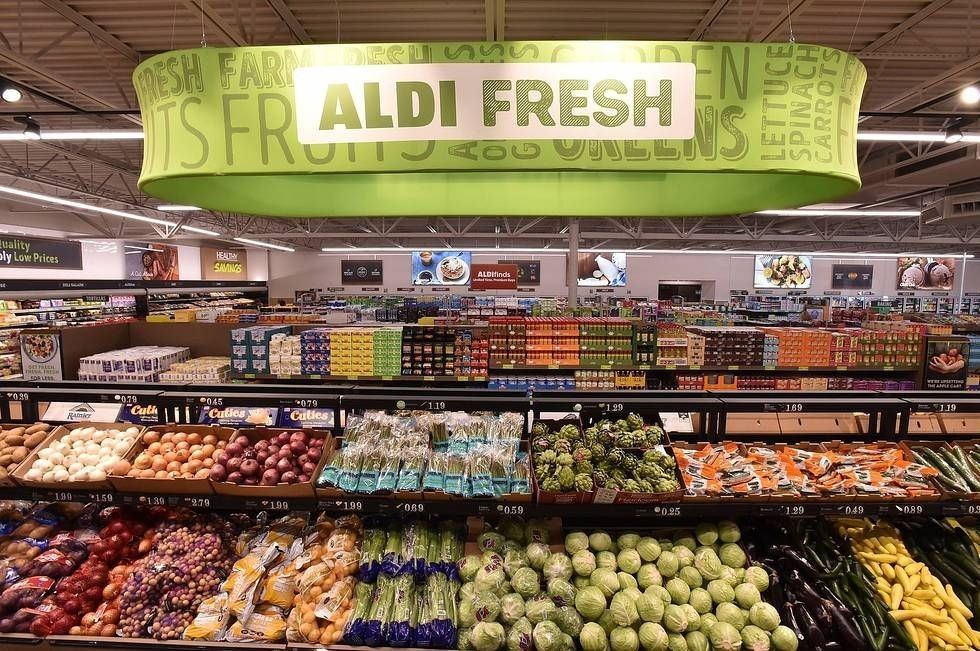All Digital at ALDI: Fast Times in Supermarket Tech

ALDI, a leader in the global grocery industry, finds itself in the crosshairs of the steady march of digital innovation. Can it transform its supply chain to succeed in a digital-first world?
ALDI, a German-based, global deep-discount grocery retailer, finds itself in the crosshairs of the steady march of digital innovation. The singular focus of the firm to-date has been to deliver “the best quality product at the lowest possible price,” and the architecture of its entire supply chain executes against this organizational objective. [1] Historically, this has translated into little-to-no-emphasis on technologizing the supply chain, opting instead for driving efficiency via an almost entirely private-label product offering with limited SKUs and long-standing supplier relationships. [2]
More recently, the ubiquity of digital solutions in everyday life have contributed to a shift in consumer preferences, e.g., the adoption of e-commerce, and a shift in the art-of-the-possible of B2C supply chains, e.g., the analysis of big data. [3] Though slower to arrive, this trend is now beginning to permeate the fabric of the global grocery industry, presaging wide-ranging impacts for all industry participants including ALDI.
The benefits of digitalization for ALDI are consistent with those observed across industries, yielding lower economic costs across the board: search, replication, transportation, tracking, and verification. [4] In an increasingly competitive global grocer marketplace, with the cross-border expansion from domestic players and the greenfield entry of tech players, ALDI runs the risk of falling behind the digitalization curve. Were ALDI to act too slowly, it would forego the associated cost savings as others achieve them and, consequently, lose the competitive pricing edge that has been critical to its expansion and profitability. [5] With 39% of consumers willing to buy groceries directly from producers, ALDI will also increasingly face pressure from emerging digital-based direct-to-consumer business models from marquee CPG names. [6, 7]
Change Is All You Need
Today, only 4% of U.S. grocery sales are generated online, but that number is expected to grow to 20% by 2025, with similar growth expected across ALDI’s global geographic footprint. [8] The growing customer preference for a click-to-receive grocery buying experience presents an inherent last-mile supply chain challenge: enhancing the capabilities of a brick-and-mortar retail business to achieve efficient and cost-effective doorstep delivery. In a first step toward meeting the need, ALDI has announced a strategic partnership with Instacart, the well-known online grocery delivery service. Beginning in late 2017, the partners will offer customers the option of ordering groceries online via the Instacart app and receiving them within the hour at a location of their choice. [9]
ALDI is also beginning to make medium-term investments in the digitalization of its in-store experience. In July 2017, the company earmarked $6 billion toward the renovation and modernization of its stores globally. [10] The new stores, which may leverage shelf-stacking and floor-cleaning robots, are likely to afford ALDI with long-term cost improvement in order to reinvest behind better serving the evolving digital-first palate of the developed market consumer. [11]
What Is To Be Done?
Despite the progress the company has made downstream over the last few years, ALDI has yet to explore several opportunities for through-the-chain digital transformation that competitors are already beginning to capitalize on today. Chief among these operational improvement levers is the introduction of Internet of Things (IoT) technology into the supply chain. [12] A full IoT implementation would give ALDI visibility into the origin, location, and destination of all products at all times. This additional visibility, in turn, could become the backbone upon which the company would build an in-house online order-and-deliver solution (a la Instacart) and the supermarket of the future (a la Amazon’s Go store concept). [13]
In order to move its supply chain closer to the innovation frontier, ALDI will also need to invest behind an internal innovation agenda focused on tech-enabled supply chain R&D. Radical business transformations do not arise sui generis, but rather from a coherent chain of investment, learning, and testing decisions. Building a robust R&D competency will create a funnel of invention that can complement and feed into the supply chain implementations that ALDI is already experimenting with today.
More near-term, ALDI should aggressively leverage the in-chain data that is already available today in the context of novel, plug-and-play machine learning and data science solutions. Though the company may not have the most granular and highest frequency information on its merchandise, it would stand to benefit tremendously from bringing to bear predictive analytics on existing data in order to optimize everything from high-level inventory management to dynamic pricing with suppliers and customers alike. [14]
Compete At Your Own Risk
Even with a comprehensive effort toward keeping up with the digitalization of competing supply chains, it remains unclear whether ALDI will end up a loser in a full-fledged innovation competition versus Amazon and other digital innovators. Perhaps more importantly, can the grocery business that took the world by storm with low prices pivot to become a tech-centric company and sustain its expansion?
(796 words)
[1] Susanne Amann et al., “What Makes the Aldi Discount Empire Tick,” Der Spiegel, August 3, 2010, http://www.spiegel.de/international/business/a-secretive-family-s-success-what-makes-the-aldi-discount-empire-tick-a-709937-2.html, accessed November 2017.
[2] Dieter Brandes,”Is ALDI really that Special?,” International Commerce Review : ECR Journal 5, no. 1 (2005): 26-37, ABI/INFORM via ProQuest, accessed November 2017.
[3] The Digitalization of Grocery, 2017, on JDA website, https://jda.com/knowledge-center/collateral/the-digitalization-of-grocery, accessed November 2017.
[4] Avi Goldfarb et al., “Digital Economics,” NBER Working Paper 23684, 2017, http://www.nber.org/papers/w23684, accessed November 2017.
[5] “Tomorrow, not quite the world,” The Economist, March 12, 2015, https://www.economist.com/news/business/21646224-german-discounters-successful-business-model-only-stretches-so-far-tomorrow-not-quite, accessed November 2017.
[6] Elfrun von Koeller et al., “As Grocery Goes Digital, How Should CPG Supply Chains Adapt?,” October 10, 2017, on BCG website, https://www.bcg.com/publications/2017/consumer-products-supply-chain-management-grocery-digital-cpg-supply-chains-adapt.aspx, accessed November 2017.
[7] “Aldi Meets Amazon: Digitalization & Discount Retailers: Disruption in Food Retail,” October 2017, YouGov, http://campaign.yougov.com/rs/060-QFD-941/images/YouGov%20Reports_Aldi%20meets%20Amazon_US.pdf, accessed November 2017.
[8] “The Future of Grocery,” April 2015, on Nielsen website, https://www.nielsen.com/content/dam/nielsenglobal/vn/docs/Reports/2015/Nielsen%20Global%20E-Commerce%20and%20The%20New%20Retail%20Report%20APRIL%202015%20(Digital).pdf, accessed November 2017.
[9] Nandita Bose, “Aldi Enters Grocery Delivery in Partnership with Instacart,” Reuters, August 14, 2017, https://www.reuters.com/article/us-aldi-grocery/aldi-enters-grocery-delivery-in-partnership-with-instacart-idUSKCN1AU0ES, accessed November 2017.
[10] “Germany’s Aldi to Invest 5 billion Euros in Stores,” Reuters, July 2, 2017, https://www.reuters.com/article/us-aldi-strategy/germanys-aldi-to-invest-5-billion-euros-in-stores-bild-am-sonntag-idUSKBN19N0ES, accessed November 2017.
[11] McKinsey & Company, “The future of grocery—in store and online,” June 2017, podcast, https://www.mckinsey.com/industries/retail/our-insights/the-future-of-grocery-in-store-and-online, accessed November 2017.
[12] John Karolefski, “Digitizing the Grocery Supply Chain,” 2017 Equipment, Design and Operations Handbook, 2017, http://digitalmag.groceryheadquarters.com/groceryheadquarters/equipment_handbook_2017, accessed November 2017, 6-10.
[13] “Gartner’s Hype Cycle Reveals the Digitalization of the Supply Chain,” press release, September 11, 2017, on Gartner website, https://www.gartner.com/newsroom/id/3798863, accessed November 2017.
[14] Tim Laseter et al., “A Strategist’s Guide to the Digital Grocery,” Strategy+Business, July 10, 2017, https://www.strategy-business.com/article/A-Strategists-Guide-to-the-Digital-Grocery, accessed November 2017.





ALDI seems to have great prospects for the short and medium-term, but the question is when will they make the big investments for the long-term. My guess is not soon. In a market position as the low-cost provider, you’re looking to keep R&D as low as possible to beat the competitors on margin in an industry where margins are 1%-2%. I also wonder if digitizing the supply chain is really up to ALDI or if it comes down to their partners and suppliers. If ALDI needs to know where inventory is located, they can likely just utilize a system that receives and analyzes the information, while shippers and distributors actually implement internet-of-things technology. ALDI seems to be at the risk of investing in technology without fully deciding where their strategic place is in the supply chain. Do they want to control the inventory and build a system that allows for direct warehouse-to-consumer delivery? Or are they better off simply being the best solution for their primary customer base that wants the lowest costs possibly in a physical store experience? Will the technology choices they make aim to only lower costs, or will they develop into an omni-channel business where the competition looks much more threatening.
ALDI’s positioning in the value segment of the market appears to make the decision to heavily invest in R&D unlikely at the moment. The company is successful because it offers a no thrills in store experience with the lowest price possible. Innovation on the technology front does not appear to be in the company’s DNA. I wonder if it would be easier for ALDI to instead partner with other technology firms to develop this technology and act as a testing ground for it. Nestle and Walmart recently partnered with IBM to test blockchain tracking of produce [1]. This could be a cheaper way for ALDI to help develop and gain access to technological advances without needing to develop the internal resources or spend too much on R&D since a pivot to being a tech focused firm is not likely.
[1] Rodger Aitken, “IBM Forges Blockchain Collaboration With Nestlé & Walmart In Global Food Safety,” Forbes, August 22 2017, https://www.forbes.com/sites/rogeraitken/2017/08/22/ibm-forges-blockchain-collaboration-with-nestle-walmart-for-global-food-safety/#7a9f60333d36, accessed November 2017.
Excellent article! It does sound like ALDI is facing competitive pressures from multiple fronts and needs to do something to ensure they can continue to win due to price. I agree with your assessment that digitization is a way they can accomplish this, especially if they begin focusing on supply chain. Fundamentally, I think ALDI can initiate a shift to a more digital supply chain. Since they are the “end of the line” it is on them to gather consumer purchasing data and provide that data back in the chain. Then they’ll need to partner with their suppliers to apply the machine learning and data science solutions. I foresee some push back from historical suppliers, so they may need to be open to switching. Personally, I’m rooting for a classic grocer like ALDI over big, bad Amazon.
ALDI is in a wonderful position to displace higher-cost grocers who are located above them on the cost-to-service curve as per Clayton Christensen’s low cost disruption (http://www.claytonchristensen.com/key-concepts/). This makes it key to focus on R&D to find ways to increase service without sacrificing the price advantage.
Digitization of the supply chain is essential in grocery in how dynamic and responsive the company can be. Standard products can find the lowest cost supplier and deliver on reliable schedules, but significant changes in demand can be addressed with smaller, local suppliers or reshuffling of excess inventory at neighboring stores.
Digitization of supply also adds a significant feedback loop to improve quality – understanding exactly what product was sold to which customer resulted in a complaint allows ALDI to quickly isolated shipments or suppliers of concern, improving the quality of their offerings and closing the gap with incumbent grocers.
Great article, Point A to Point B!
My immediate thoughts with regards to Aldi digitalizing its supply chain echo Stender’s. I don’t believe it’s in their best interest to invest in high tech digitalization efforts like IoT. The company runs the risk of underestimating the high fixed costs, learning curve costs and opportunity costs that will arise from such an investment as well as how long such high tech investments can take to yield lower operating costs. Having played in the low-cost space in so long, company management will certainly face a tough time dealing with margin squeezes.
I do think that there is a place for digitalization with respect to ‘delivery’ and ‘order for pick up’. For now, I think that’s where Aldi should focus its energy and attention until IoT becomes commoditized enough to be ‘plugged and played’.